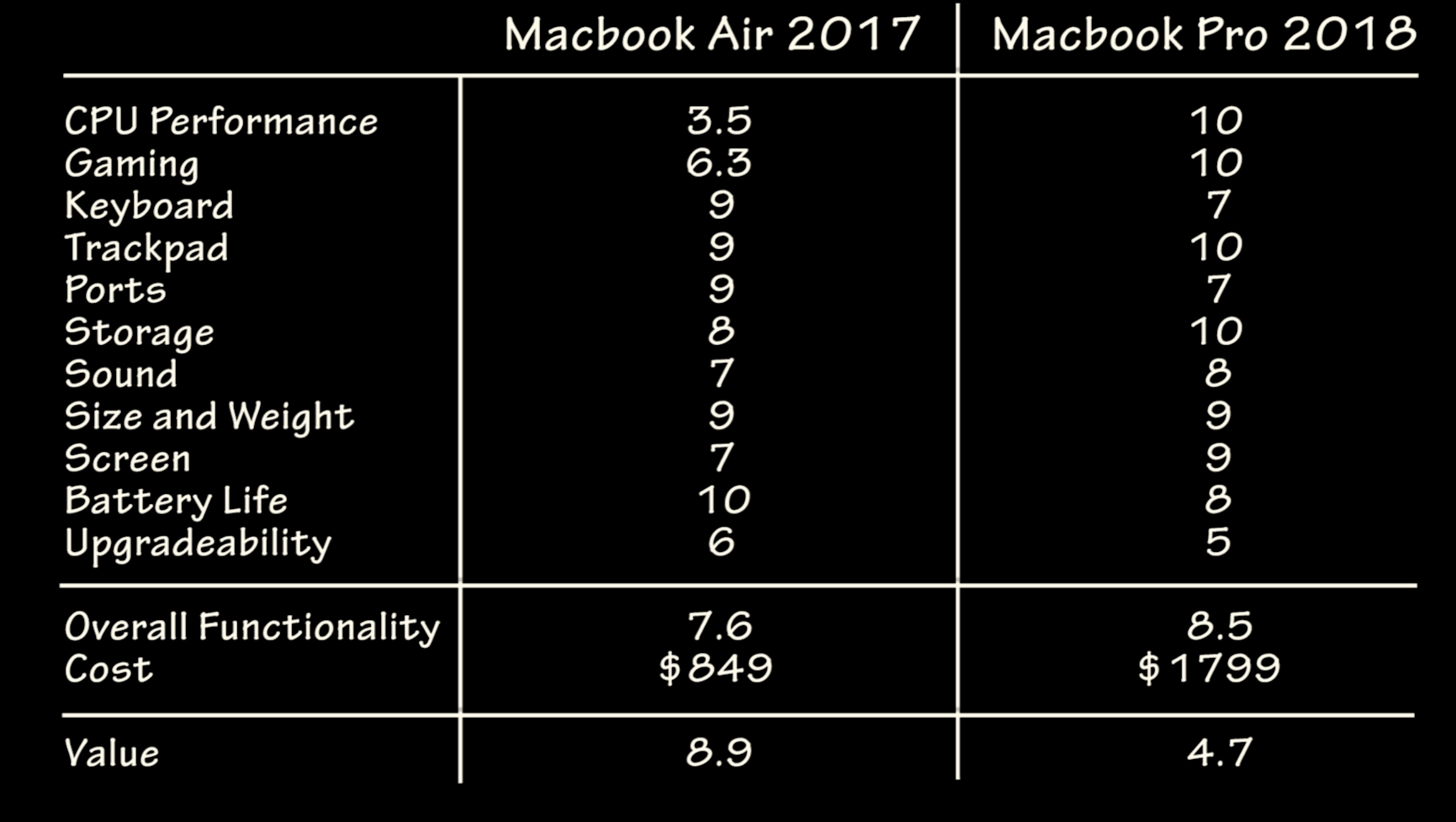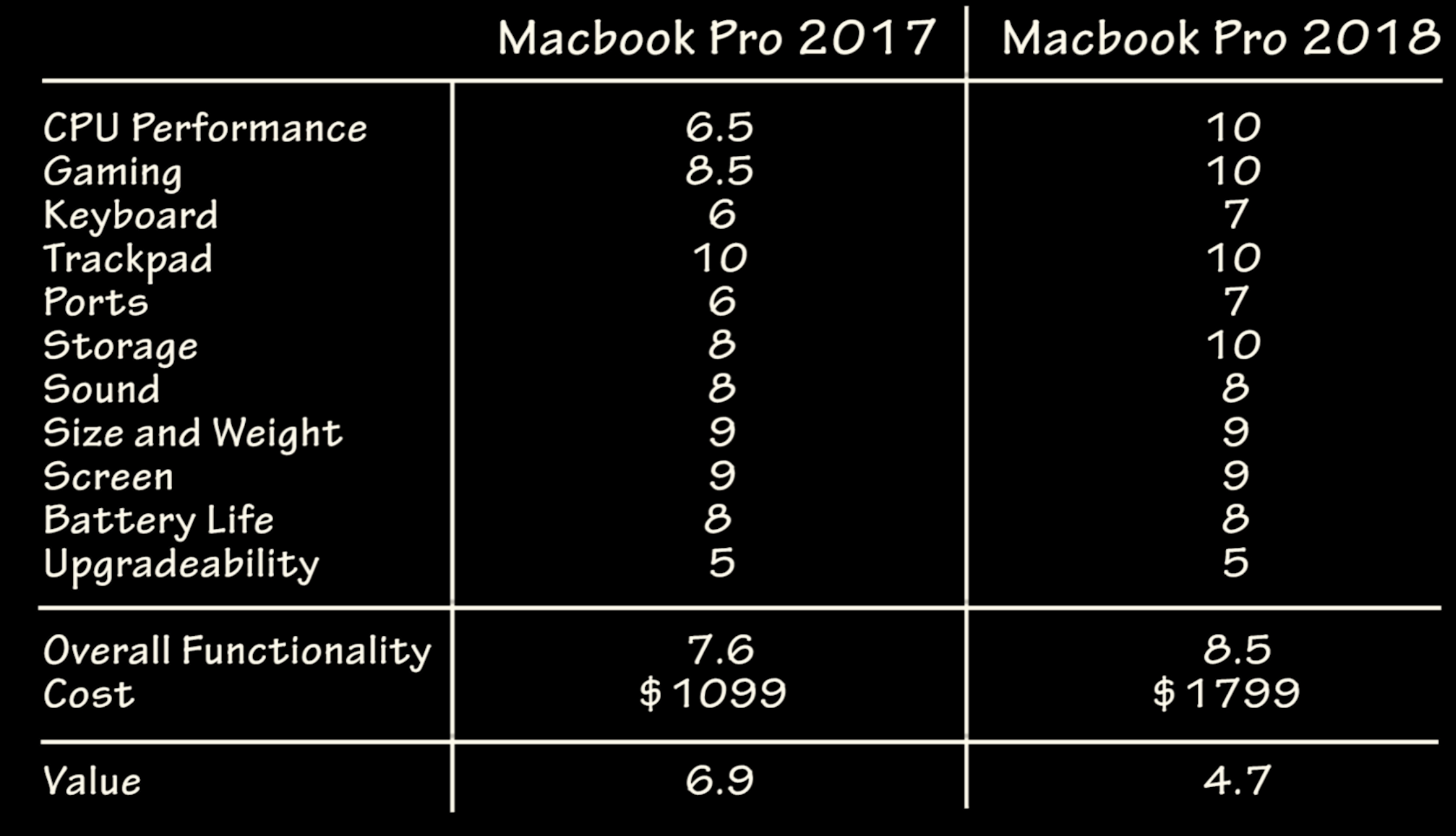Intro:
Back in 2013 and 2014, I used the Surface Pro 2 and Surface Pro 3 for a couple of months. Regrettably, due to weight, battery life, and thermal throttling, I sold them. Now I’m ready to try out Microsoft’s latest version, the Surface Pro 6.
Is the gold standard for tablet hybrids worth your money?
Configuration Options:
As an average Joe, who doesn’t like breaking the bank, I typically review the base model, the absolute cheapest model you can purchase that also has 8 GB of RAM. That said, though, as I was going to purchase the Surface, Microsoft’s website stated that the i7 is meant for gaming, so I upgraded. I also upgraded the RAM to 16GB and the storage to 512GB. These options increased the price from $900 to $1900. These prices do NOT include the keyboard and pen. My wife was not happy.
- Display: 12.3-inch (2736×1824) PixelSense display, with 10-point touch
- Processor: 8th Gen Quad-Core 1.6GHz Core i5 (8250U) or 1.9GHz i7 (8650U)
- Graphics: Intel HD 620
- Memory: 8-16GB DDR3 RAM
- Storage: 128GB-1TB NVMe PCIe SSD
- Processor: USB 3.0 Type-A, Surface Connect, miniDisplayPort, microSDXC card reader, 3.5mm headphone jack
- Wireless: 802.11ac, Bluetooth 4.1
- Cameras: 5MP/1080p (front) with Windows Hello; 8MP rear
- Battery: 45Wh
- Dimensions: 11.5 x 7.9 x 0.33 inches
- Weight: 2.36 lbs (with type cover)
- Colors: Platinum, black
My Price: $1899 for tablet, $159.99 for the keyboard (which is absolutely necessary!), $99 for the Surface Pen, and $34.99 for the Surface Mouse. Total: $2160 before tax.
Stick around to find out if I think these upgrades are worth it.
Ports:
The Surface Pro 6 has the same external design and port options as the Surface Pro 3, Surface Pro 4, and Surface Pro 5. I don’t think Microsoft wants to support Thunderbolt 3. As a result, there are no USB-C or thunderbolt 3 ports on the Surface Pro 6, even though the Surface Go and Surface Book do at least have USB-C.
- The Surface Pro 6 includes:
- USB 3 port with speeds up to 5 Gbps
- Surface Connector
- MiniDisplayPort
- microSD card slot
- 3.5mm headphone jack
It is a shame that I have to talk about the headphone jack like it is a plus.
No idea what the Surface Connector speed is, but Microsoft’s Surface Connect to USB-C adapter doesn’t include thunderbolt 3 speeds. Therefore, there isn’t an option right now for external GPUs. Let me know if you know what it’s speed is.
Sound:
- Stereo speakers
- Dual microphones
- 3.5mm headphone jack
Display:
The 2736×1824 display has the same resolution as the 2017 model, but it is a little brighter. I should add that higher resolution displays work a lot better in Windows now. Back in 2014, the Surface Pro 3 did not scale Windows X86 apps very well. For example, Steam was a nightmare to use, especially when trying to use the Surface as a tablet. On the Surface Pro 7, to my pleasure, Steam scales perfectly. Using the Surfaces touch interface is much easier now when text is appropriately sized. The display supports Microsoft’s Surface Dial as well, but I didn’t test this.
Size and Weight:
The 11.5 x 7.9 x 0.33 inch dimensions and 2.36 lb weight allow the Surface pro to easily fit inside a bag with minimal strain on your back. Remember, all the weight is in the screen. A laptop with a 12.3 inch display is great for using on a desk as long as you are only using the touchscreen every now and then. A tablet with a 12.3 inch display is “ok” for using on a desk as your arms will fatigue trying to reach all parts of the screen. The surface is a nightmare when trying to consume media in bed. The only thing that worked was locking it in landscape and placing it on its side. It is too heavy to hold while I lie on my back.
Lapability:
How is it’s “lapability?” The keyboard does stay attached to the Surface while in my lap to an extent. The kickstand will become uncomfortable after long periods of use. These are the same issues I had with the Surface Pro 3. Some things Microsoft fixed, though, are battery life and thermal throttling.
Battery Life:
Battery life averaged eight hours rather than Microsoft’s advertised 13.5 hours. This is way better than the Surface Pro 3’s six hours (and advertised nine). Still, the battery will last you through the entire day of work and school.
Processor:
The Surface Pro 6 includes Intel’s 8th Gen Quad-Core Core i5 or i7 processors. All previous models were only Dual-Core. As a result, there is a significant boost in Multi-Core performance.
- Microsoft’s descriptions for these processors:
- Intel Core i5: Perfect for photographs, videos, reports, and presentations. Compatible with Surface Dial (off-screen interactions). Choose from two memory and storage configurations
- Intel Core i7: The Intel Core i7 option includes Intel UHD graphics, making your photo, video, and 3D applications run faster. It also gives you the ability to play more PC games. Compatible with Surface Dial.
- Geekbench 4.2.3 Benchmarks:
- Single-Core Score: 4429
- Multi-Core Score: 13833
- OpenCL Score: 36842
I didn’t get any thermal throttling. For the Surface Pro 3, 10 Chrome tabs would start the fans. This doesn’t happen on the Surface Pro 6. It does get warm when charging, though, which could hurt your performance.
Upgradeability:
Nothing is upgradeable. Get what you need when you need it.
RAM:
As I said before, in my opinion, do not buy a computer today with anything less than 8GB of RAM. Luckily, the base model ships with 8GB or RAM for $900. Regrettably, if you upgrade the RAM to 16GB, Microsoft forces you to also upgrade the processor and storage to the Core i7 and 512GB increasing the $900 price to $1900. I know you are getting more performance with the Core i7 and more storage is also useful, but it would be nice to have the option to upgrade the RAM without having to upgrade the Processor and Storage as well.
Gaming:
Microsoft states that the Surface Pro 6’s Intel Core i7 option gives “you the ability to play more PC games.” Let’s find out.
- TombRaider Benchmarks at 720p Low Settings
- Min FPS: 48.0
- Max FPS: 102.0
- Average FPS: 79.7
As a result, older games run very well. X360 and PS3 generation games run well on medium settings, and the latest generation of games can play at low settings very well. GeForce NOW Cloud Gaming and Steam In-home streaming are great alternatives if you really want to game.
Type Cover:
The Type Covers weren’t updated this year. Therefore, you can purchase the older Type Cover on Amazon or the Signature Type Cover on Amazon or Microsoft. These type covers are interchangeable. The Type Cover and Signature Type Cover are exactly the same mechanically. The only difference is the Alcantara or suede fabric on the Signature version. The Signature Keyboard used to cost an extra $30, but Amazon has both keyboards similarly priced now. Why did I choose the Type Cover over the Signature Type Cover? My wife likes red and not Burgundy. Key travel is 1.0mm, almost double the key travel in the current gen Macbook Pros. As a result, typing on this keyboard is very comfortable. That said, you will find it difficult to type quietly when the cover is slanted. You might bother your classmates or coworkers. There exists no fingerprint sensor on this version, though. The keys are backlit with the ability to adjust key brightness. Figuring out how to adjust screen brightness was a chore. It’s not marked like the keyboard brightness. I thought I had a malfunctioning keyboard, but no. FN+DEL and FN+Backspace adjust the screen brightness.
Precision trackpad:
This trackpad has some of the best tracking on Windows. That said, it is a little small for my tastes. Does it pass my finger-roll test? Kind of. It senses the movement, but it’s not as sensitive as an Apple Trackpad.
Surface Pen:
The Surface Pen was not upgraded this year. With 4,096 levels of pressure, it is more sensitive than the previous pen. That is why I got the 2017 burgundy pen. My wife likes it. She says it’s fun to draw and doodle with. As far as using the pen for note taking, she and I both don’t recommend it. For us, we are fast typists; I also found out that I am faster at using swipe gestures to type on the on-screen keyboard than I am writing with the stylus. Both of our notes were barely legible as well.
Surface Pro 2017 vs Surface Pro 6 2018:
The Surface Pro (2017) and the Surface Pro 6 (2018) are physically identical from a chassis standpoint. The major differences are internal. The new 8th Gen Quad-Core processors give a substantial improvement in Multi-Core performance over last year’s Dual-Core Processors. Last year’s Intel Core i7-7660U scored 4568 Since-Core and 9209 Multi-Core Improvements. Equivalent single-core scores. 50% improvement multi-core performance! Last year’s Intel Iris Plus Graphics 640 scored OpenCL of 31278. This years UHD 620 scored OpenCL of 36842. This is an 18% Improvement. The other difference: It comes in black.
Conclusion:
Should you get the Surface Pro 6? If you like large 2-in-1’s, then this is the gold standard. It’s battery life, performance, keyboard, and trackpad are all great, but it’s ports selection, lapability, and upgradeability are things you should consider before purchase.


